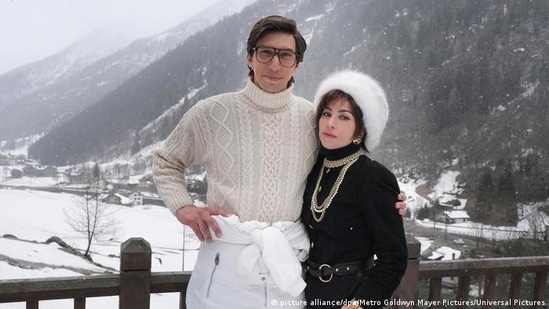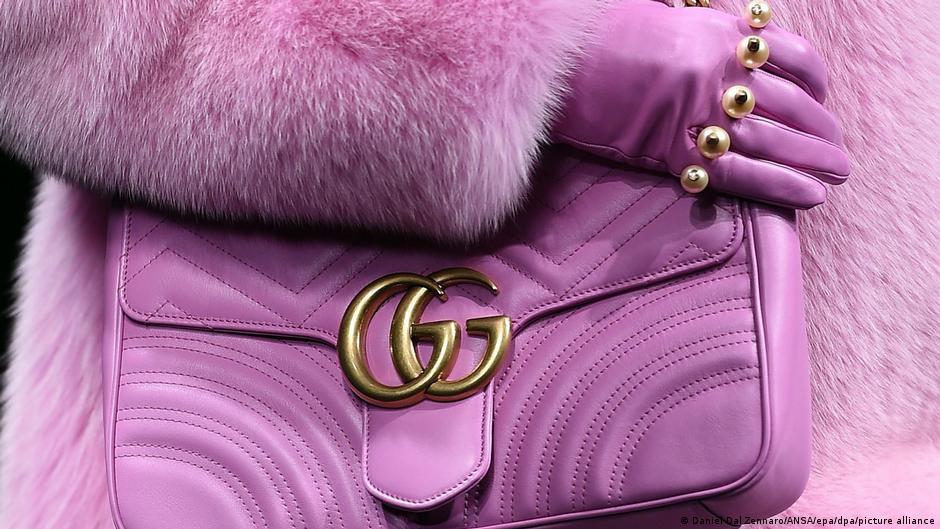House of Gucci: 100 years of iconic fashion
As the Italian luxury label celebrates a century of fashion highs, a Ridley Scott film starring Lady Gaga and Adam Driver revisits one of its intriguing lows.
When Guccio Gucci opened his first store on Via Vigna Nuova in Florence, Italy in 1921, little would he have imagined that his surname would become synonymous with sex appeal, hip-hoppers, gender-fluid dressing, and amass 46 million followers on a 21st century platform called Instagram.

Add to that, screenplay-worthy family feuds, a near-bankruptcy, reversals of fortune, and even a murder — the last having provided the grist for Ridley Scott's upcoming "House of Gucci," featuring a star-studded cast led by singer Lady Gaga and actor Adam Driver.
From migrant worker to luxury brand founder
Born on March 26, 1881, to a leather goods maker, Guccio Gucci left his native Italy in his teens, and among other jobs, worked as a bell boy at The Savoy Hotel in London in the late 1890s. It was the exquisite luggage belonging to the hotel's well-heeled guests that first sparked his imagination.
Eventually returning to his native Florence, he first worked for a local luggage brand to hone his skills.
Years later, Gucci opened his first leather goods store in Florence, producing luxury leather travel goods for Italy's wealthy upper classes, and equestrian equipment — the latter influenced by conversations about polo and racing that he'd overheard at The Savoy.
During WWII, when a League of Nations embargo against Italy caused a leather shortage, Gucci drew on his resourcefulness, and created luggage made from woven hemp featuring the brand's now signature print — a series of interconnecting dark brown diamonds on a tan background.

ALSO READ | Lady Gaga with Adam Driver sparkles in silver dress at House Of Gucci premiere
Other Gucci hallmarks followed over the decades: the bamboo handle handbag, the double-G monogram, the Gucci stripe of a red bar between two green stripes, and the Gucci loafer with the equestrian inspired metal horsebit clasp, among others.
Across Italy and beyond
After WWII, Guccio's sons — Aldo, Vasco and Rodolfo — came onboard and opened more stores within and outside Italy, spurring Gucci's fortunes.
Aldo for instance oversaw the opening of Gucci's first New York store at the Savoy Plaza Hotel in 1953. Founder Guccio passed away just 15 days later, but the brand continued to make waves in New York City.
One of its handbags was renamed "the Jackie" after one of the city's famous residents, Jackie Kennedy, was seen carrying the model.
Later in 1985, the Gucci horsebit loafer was inducted into the Metropolitan Museum of Art's permanent collection. It was also famously worn by Madonna to the 1995 MTV Video Music Awards, and Brad Pitt in the 1999 film "Fight Club."
Behind the scenes though, things weren't always as rosy at the House of Gucci.
The 70s and 80s saw in-fighting among the Gucci siblings, tax evasion charges, poor management, flagging sales and the headline-grabbing murder of Guccio's grandson and one-time Gucci head, Maurizio.
The family would eventually lose all stakes in the company after it was taken over by Bahrain-based Investcorp in 1993. It was later bought by French group PPR (now Kering SA), whose CEO Francois-Henri Pinault is married to Mexican American actress Salma Hayek.
Hayek is part the star-studded cast of the upcoming Ridley Scott film, "House of Gucci," that focuses on the events leading to the murder of Maurizio Gucci (played by Adam Driver), orchestrated by his ex-wife Patrizia Reggiani (Lady Gaga).
Having once enjoyed a glitzy lifestyle together, Maurizio eventually left Patrizia for his mistress, Paola Franchi. Patrizia and her accomplices (which included a self-confessed witch called Auriemma, played by Hayek) were later found guilty of the crime, and sentenced to several years in prison each.
From sex appeal to genderless fashion
However, one fortune-reversing decision that Maurizio Gucci made before his untimely death was to enlist American designer Tom Ford as the brand's creative director.
Ford is often credited with having injected the brand with a heavy dose of sex appeal, extending even to its at-times scandalous advertisement campaigns.
With Ford at the helm creating fashion that stood out amidst the grunge of the 1990s, Gucci was transformed into a billion-dollar business, sealing its reputation as an "it" fashion brand.
Ford left big shoes to fill, and his successors Alessandra Facchinetti and Frida Giannini did contribute to the brand's evolution — though not as exceptionally as he did.

Then in 2015, Alessandro Michele, who'd already been working at the fashion house amongst others as a handbag designer, was made creative director. And his recent genderless takes on fashion — especially men's fashion — has led to Gucci's revival.
For instance, Michele dressed Jared Leto — who incidentally portrays Paolo Gucci in the film — in a red Gucci evening gown, accessorized with a model of his own head for the 2019 Metropolitan Museum of Art's Costume Institute Gala.
And British singer Harry Styles became the first-ever man to grace the cover of American Vogue, wearing a periwinkle Gucci gown and dark jacket also designed by Michele.
Beloved: from hip-hoppers to Instagrammers
Underscoring its place in pop culture is the fact that Gucci is the second most referenced brand in hip hop music: Lil Pump's 2017 hit "Gucci Gang" alone mentions the brand 53 times.
Gucci's connection with hip hop dates back to the 1980s, when Harlem-based designer Daniel Day a.k.a Dapper Dan created knockoffs by customizing track jackets with Gucci's monogram for hip hoppers Eric B. and Rakim for their debut record, "Paid in Full."
The brand recently collaborated with Dapper Dan as part of its 100-year celebrations.
The recent resurgence of 1990s trends have also helped Gucci amass a new market: the millennials. Gucci's double G logo is almost unmissable on social media these days. And as a nod to the trappings of the 21st century, there's also the Gucci Kids Playground, the first app dedicated to children's wear.
Catch your daily dose of Fashion, Health, Festivals, Travel, Relationship, Recipe and all the other Latest Lifestyle News on Hindustan Times Website and APPs.



